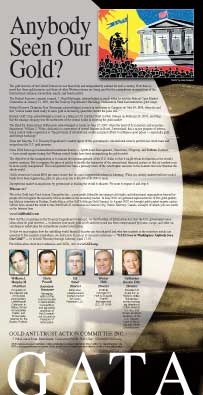By Doug Wakefield with Ben Hill @ Asia Times
On Monday, November 2, it will have been seven months since leaders of the Group of 20 nations met in London to expand the international currency known as Special Drawing Rights. If you want to brush up on the background of this international currency, our November 2008 newsletter, states, from the International Monetary Fund's website:
The Special Drawing Right (SDR) was created by the IMF in 1969 to support the Bretton Woods fixed exchange rate system. After the collapse of the Bretton Woods system in 1973, the SDR was redefined as a basket of currencies, today consisting of the euro, Japanese yen, pound sterling, and US dollar. The US dollar-value of the SDR is posted daily on the IMF's website.
As we read the IMF's website further, we learn that the IMF has been trying to expand the number of SDRs in circulation for years.
There are two kinds of allocations:
General allocations of SDRs have to be based on a long-term global need to supplement existing reserve assets. General allocations are considered every five years, although decisions to allocate SDRs have been made only twice. The first allocation was for a total amount of SDR 9.3 billion, distributed in 1970-72. The second allocation was distributed in 1979-81 and brought the cumulative total of SDR allocations to SDR 21.4 billion.
A proposal for a special one-time allocation of SDRs was approved by the IMF's Board of Governors in September 1997 through the proposed Fourth Amendment of the Articles of Agreement. This allocation would double cumulative SDR allocations to SDR 42.8 billion. Its intent is to enable all members of the IMF to participate in the SDR system on an equitable basis and correct for the fact that countries that joined the Fund after 1981 - more than one fifth of the current IMF membership - have never received an SDR allocation. The Fourth Amendment will become effective when three fifths of the IMF membership (111 members) with 85 percent of the total voting power accept it. As of end-March, 2008, 131 members with 77.68 percent of total voting power had accepted the proposed amendment. Approval by the United States, with 16.75 percent of total votes, would put the amendment into effect.
When we consider the fact that the quantity of this international currency remained unchanged between 1979 and 2009, we begin to realize that the April 2 meeting was truly a historic moment. On this day, with the stroke of a pen and the benefits of modern electronic banking, the G-20 nations conjured another 250 billion in SDRs and gave the IMF an additional US$750 billion to lend. Rightly did the October 6, 2009, Council on Foreign Relations piece, "The IMF's Growing Powers", state:
The IMF has gone from a $250 billion institution to a $1 trillion institution. So the fund is much more relevant and central than it was three years ago.
Additionally:
READ THE REST HERE
Monday, November 16, 2009
Subscribe to:
Post Comments (Atom)

![[Most Recent Quotes from www.kitco.com]](http://www.kitconet.com/charts/metals/gold/t24_au_en_usoz_2.gif)






No comments:
Post a Comment